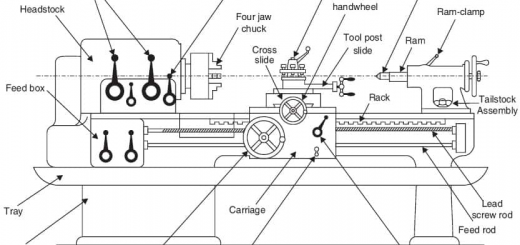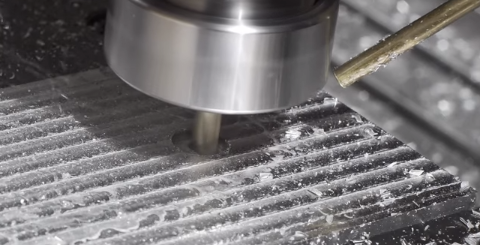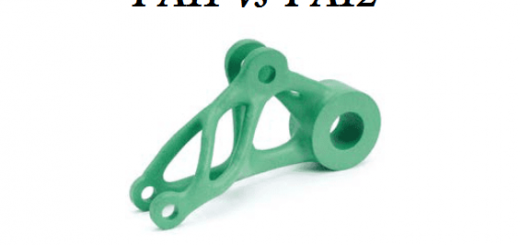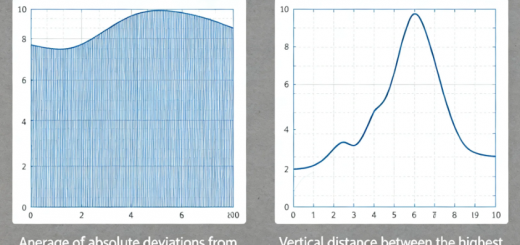Guide to Drilling a Hole in Stainless Steel: Process, Drill Bit, Speeds and Lubricants
There are different ways to drill holes in stainless steel, which involves various equipment and tools. This article will explore the stainless steel drilling methods, process, steps, drill bits, speeds, and lubricants to ensure the optimal drilled parts.
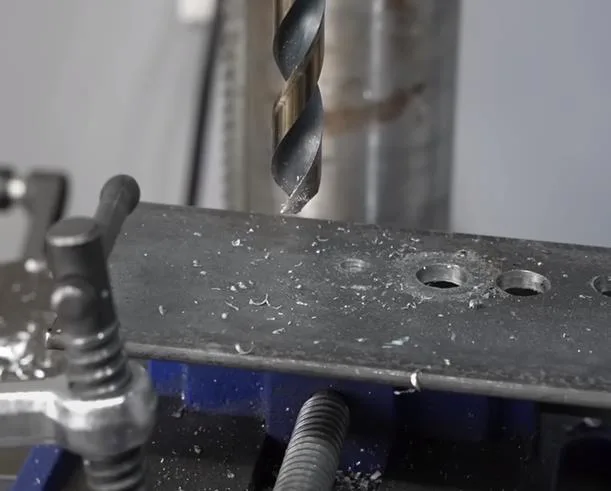
How to Drill Stainless Steel with a Drill Press?
1. Preparation: Ensure the worktable is clean and free of oil, debris, and metal shavings, and securely fasten the drill press to a sturdy work surface to prevent vibration or movement.
2. Tool Selection: Select a drill bit specifically designed for stainless steel, such as a cobalt or solid carbide drill bit, which offers high hardness and long tool life, and adjust the drill bit position according to the workpiece size and hole depth.
3. Installation and Positioning: Properly locate and clamp the workpiece, and mark the center of the hole on the stainless steel surface, ensuring accurate positioning in the X and Y directions.
4. Drilling Operation: Adjust the spindle speed to the required velocity, taking into account different material thicknesses and drill bit types, and use lubricating oil to enhance drilling efficiency, especially when drilling hard materials.
5. Safety Operation: Avoid overloading the drill press to prevent machine damage or safety risks, and ensure the equipment is properly started and running smoothly before commencing drilling.
6. Completion: After completing the drilling operation, shut off the power supply, clean the worktable, and sweep the drill press’s guide rails to maintain cleanliness.
How to Drill Hardened Steel with a Hand Drill?
Hand drills can also be used to drill stainless steel, here are the steps.
Step 1: Prepare the Drill Bit
– Use a concrete bit (also known as a masonry bit or hammer drill bit) instead of a solid carbide drill bit, as it is more suitable for hand drilling.
– Grind the tool bit to resemble a spade bit, with a contoured shape on both sides and a gouging point in the center. This will help to create a chip relief and improve drilling efficiency.
– Be careful when grinding the bit, as carbide is fragile and can break easily.
Step 2: Test the Hardness of the Steel
– Use a Rockwell hardness tester to determine the hardness of the steel you are drilling. In this case, the steel has a hardness of 59 Rockwell, which is quite hard.
Step 3: Sharpen the Drill Bit
– Use a diamond wheel or a table saw to sharpen the drill bit. If you don’t have these tools, a hand grinder with a diamond wheel can also work.
– Avoid using serrated blades, as they make an interrupted cut and can be harder to hold, especially with small bits.
– Use two drill bits to save money and create a new, sharp edge.
Step 4: Drill the Steel
– Use a handheld drill and attach a level to the back of the drill to ensure perpendicular drilling.
– Place a white piece of paper under the drill bit to help you see the drilling process.
– Start drilling slowly and carefully, applying gentle pressure.
– Use a coolant, such as oil or water, to reduce heat and prevent the drill bit from breaking.
Step 5: Sharpen the Drill Bit Again (if necessary)
– If the drill bit becomes dull or breaks, sharpen it again using the same method as before.
– Remove any silver solder to expose the carbide and sharpen the bit.
Step 6: Continue Drilling
– Once the drill bit is sharpened, continue drilling slowly and carefully, applying gentle pressure.
– If the drill bit breaks again, repeat the sharpening process until you have successfully drilled the hole.
Tips to note:
Choose the appropriate drill bit: such as cobalt containing high-speed steel drill bit or hard alloy drill bit.
Control speed and cooling: The optimal speed for the electric drill should be between 80-120 to avoid excessive speed causing the drill bit to burn out.
Accurate drilling position and angle: Ensure that the drilling position and angle are correct to avoid displacement or damage to the workpiece.
Step-by-step drilling: If the aperture is large, you can first use a small diameter drill bit to drill a smaller guide hole, and then gradually expand it to the desired diameter.
What Drilling Speed Should I Use for Stainless Steel?
1) For drilling relatively thin gauge stainless steel sheets
The speed is typically less than 1/8 inch thick, and a drill speed between 150-250 RPM is recommended. At this thickness, the stainless steel won’t work harden as dramatically as thicker material. The slightly higher speed range helps reduce drilling time while still providing adequate chip clearing and cooling for the drill bit.
2) When drilling thicker stainless steel plates, such as 1/4 inch and thicker
It requires lowering the speed further to around 100-150 RPM to avoid overworking the drill bit and work hardening the stainless too much during the drilling process. The heavier forces involved with drilling thick material place more stress on the bit, so slowing down the speed is necessary to allow the bit to cut effectively and last longer before dulling. Excessive speeds could quickly burn up or break the bit when drilling larger holes in heavy wall tubing or thick plate stainless steel.
3) For drilling holes using larger drill bits greater than 1/2 inch in diameter
It is recommended to use the speed in 50-100 RPM range is generally recommended. The combination of a large diameter bit coupled with the heavy forces required to drill significant material means generating a lot of heat very quickly if the speed is not reduced accordingly. Larger bits also tend to grab and chatter more, so slower speeds provide more control and stability during drilling to help ensure a precision hole is made.
Types of Drill Bits for Stainless Steel
– Cobalt drill bits: Cobalt bits contain extra cobalt in the alloy, increasing hardness and wear resistance over standard high-speed steel bits. They work well for most stainless steel applications.
– Titanium-nitride (TiN) coated bits: The TiN coating provides a smooth, hard surface that improves heat/wear resistance when drilling stainless. Good balance of performance and cost.
– Solid carbide drill bits: Very durable materials that can withstand heavy-duty drilling. Best for thicker stainless but is more expensive initially than HSS or coated bits.
– Spiral-point geometry bits: The spiral flutes are better at ejecting chips compared to conventional bits, reducing friction and heat buildup in the hole/bit.
– Multi-step bits: Start with smaller diameter sizes and work up to the final size to avoid work-hardening the stainless as much. Gives cleaner holes.
– Bits marked for “non-ferrous metals”: While not true stainless bits, some are formulated to also handle non-stainless metals like aluminum. May work for occasional basic stainless holes.
What Drill Bit is Best for Stainless Steel?
To choose the best tool for drilling stainless steel, these factors need to be considered.
– Material. Cobalt bits, titanium-nitride (TiN) coated bits, or solid carbide bits are best suited for stainless. They have extra hardness/wear resistance.
– Surface Conditioner (S/C) rating. Higher S/C ratings (e.g. S/C Type 1-4) indicate better performance on work-hardening metals like stainless.
– Drill point type. Spiral-point geometry clears chips better than other designs, reducing friction and heat.
– Drill diameter. Match the bit size closely to your hole size for the best sharpness/control. Start small and step up if needed.
– Stainless steel grade. Higher carbon grades like 440C require tougher bits that can tolerate lower speeds.
– Hole thickness. Thicker stainless needs a stronger bit designed for higher thrust loads.
– Drilling material thickness. Consider the stainless sheet/plate thickness and choose a bit style/length suited for proper support.
– Brand reputation. Trusted brand names generally offer consistently high-quality bits engineered specifically for stainless drilling.
When drilling stainless steel, different types of drill bits have their respective applicable situations and usage recommendations.
Cobalt Drill Bits:
Cobalt drill bits are suitable for processing high-hardness materials, such as stainless steel, due to their high hardness and wear resistance. Selecting the appropriate speed and feed rate is crucial to avoid drill bit damage caused by excessive or insufficient speed. Cobalt drill bits are commonly used in the processing of aluminum, copper, and stainless steel, and possess excellent high-temperature resistance and wear resistance.
Titanium Nitride (TiN) Coated Drill Bits:
TiN-coated drill bits are suitable for processing high-hardness materials, such as stainless steel, and can significantly improve surface hardness and reduce friction, thereby extending tool life. TiN coated drill bits can enhance cutting efficiency and tool life, making them suitable for high-precision drilling and rapid chip removal. This coating also has excellent heat dissipation performance, reducing thermal damage to the drill bit itself.
Solid Carbide Drill Bits:
Solid carbide drill bits are suitable for drilling various materials, including stainless steel. They have good rigidity and high processing precision. When using, consider the coolant supply and ensure the workpiece is clamped to prevent vibration. Solid carbide drill bits are suitable for solid drilling and do not require centering or pre-drilling. Additionally, the chip groove design of these drill bits helps to improve chip removal performance, preventing chip clogging and tool breakage.
Spiral Point Geometry Drill Bits:
Spiral point geometry drill bits are suitable for processing multiple materials, including stainless steel. Their design optimizes cutting performance and tooltip strength. Selecting the appropriate cutting parameters, such as Vc=80m/min, f=0.14mm/rev, H=24mm, and Wet (internal cooling), can achieve stable processing. The special spiral groove shape helps to improve chip removal performance and high rigidity.
Drill Bits Labeled as “Non-Ferrous Metals”:
These drill bits are suitable for processing non-ferrous metals, such as aluminum and copper alloys. Selecting the appropriate coating and coating thickness can adapt to different processing requirements. For example, TiN, TiCN, and TiAlN coatings can improve wear resistance and cutting efficiency.
What Lubricant to Use for Drilling Stainless Steel?
1) Water-based lubricants:
For hand drilling smaller holes, plain water works quite well as a lubricant. It cools and flushes chips away from the drill bit. Water-soluble cutting fluids designed for metals are also effective. They penetrate tighter spaces and provide better lubricity than water alone.
2) Oil-based lubricants:
Light machine oils or lubricating oils effectively lubricate and reduce friction/heat buildup. Mineral oils, spindle oils and soluble sulfur-free cutting oils withstand heat well and protect both tool and workpiece. For heavy-duty drills or milling, a semi-synthetic or synthetic metalworking fluid resists boiling away under pressure. Anti-seize lubricants prevent material from seizing/welding. However, avoid using them inside closed systems.
3) Aerosol lubricants:
Lubricating and cutting fluid sprays allow precise application with less mess. Coat both drill bit and hole prior to drilling for best performance.


